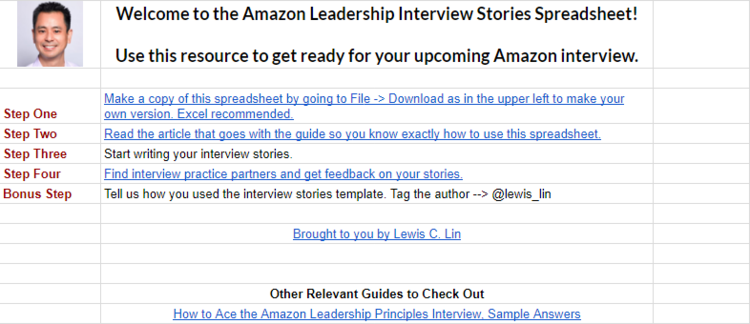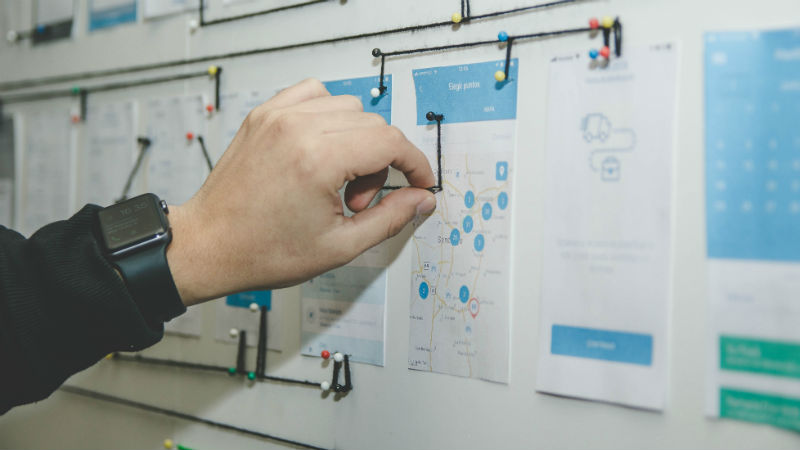
We provide interview coaching services for Amazon interviews. Over the last 10 years, we’ve coached hundreds of candidates on how to prepare for Amazon’s leadership principles interview. We’ve also developed the world-famous Amazon interview stories worksheet.
But don’t just take our word for it. Read what our clients have to say about our Amazon successes below.
If you’ve got an Amazon interview and you’re looking for help crafting your interview responses to their 14 leadership principles, that’s our speciality. We’ll help you through it. Contact us at lewis@impactinterview.com.
Here’s what clients say about us: Amazon Interview Prep
Find more Impact Interview testimonials here
“I just wanted you to know that I was offered the position of area manager at Amazon. I accepted last Friday, and I start in two weeks. Thank you for your guidance. The preparation allowed me to shine int he interview.” – S.O.
________________________________
“I have got an offer from Amazon. They told me I beat 3 internal candidates. Thanks for your interview consultation.” – K.V.
________________________________
“I just received an offer from Amazon for the Senior Product Manager Technical Products internship! I wanted to take a moment and thank you for all the help you’ve provided me.” – E.O.
________________________________
“I’ll be starting at Twitter next week. I got offers from Amazon, Twitter, Groupon, and a couple of startups. I decided to go with Twitter!” – O.J.
________________________________
“FYI – I just received the OFFER from AMAZON yesterday evening!!!!! I am beyond excited and wanted to send a note to you to thank you for your help through the process. You were a fantastic interview coach and really helped me think about the best way to frame up my experience and examples. THANK YOU!!!!” – M.I.
________________________________
“Lewis, I am a current second year student at [top-tier business school]. If you remember, we had met during your session here last month, and I had mentioned how I had found your workshop and book useful for securing the internship at Amazon and was about to interview with Google. I have gone through the recruiting process with Google as well, and have an offer from them as well now for a full time role. Thanks again for all the help through the process through your material!” – B.E.
________________________________
“Good news! I just accepted an offer from Amazon for a Sr.Program Manager role.” – W.K.
________________________________
“Amazon plans to extend an offer as a senior manager. Thanks for your help in prepping me. Really appreciate it.” – B.D.
________________________________
“I am happy to report that I have received a job offer from Amazon. Your coaching program for Amazon has definitely benefited me!” – M.B.
________________________________
“Got the Amazon offer, with an initial package that was ~$100K more than what I currently make at [a top 5 tech company]. It’s a dream job for the role of Principal Product Manager for a [special project]. – Q.K.
________________________________
“Thanks Kelly for your interview coaching! I got offers from both Amazon and Apple.” – S.N.
________________________________
“I am happy to share the good news with you- Amazon made an offer today and I accepted the position. Thank you for your coaching and guidance.” – I.M.
________________________________
“I’m very happy to share the news that I’ve been offered Principal Product Manager with Amazon. Thank you for giving me the confidence to succeed at the interview!! Definitely worth the money!” – I.J.
________________________________
“Lewis, I got an offer to join Amazon as Senior PM – Technical products and have a second round for Google PM next week. ” – N.D.
________________________________
“My son received an offer last evening from Amazon. He mentioned that the coaching was very beneficial.” – A.I.
________________________________
“I’ve landed on an Amazon PM internship + offer last year thanks to your awesome materials.” – I.K.
________________________________
“I received and accepted an offer with Amazon.com. All the coaching/practive were a huge part of giving me confidence to go in a “sell, sell, sell” myself. I’ll be passing your name along to those (like me) who need some brushing up on their interview skills!” – B.H.
________________________________
“Martins, I just wanted to drop you a note, and thank you for your excellent coaching and guidance. I noticed an immediate change in my interview performance after our sessions and I believe that is what got me from being rejected in Rounds 1-2 to actually seeing what a final round looks like. Unfortunately, I couldn’t make it past Amazon’s final round. I finally forced myself to stop cramming the day before the interview and take it easy. That really helped me relax and my mind finally seemed to work. I received three really great job offers last month. I am really excited! This is what I’ve been praying for, a chance to start fresh and build a new life. From the bottom of my heart, thank you very much for your help. That really was the best use of my money ever and I would do it all over again.” – Y.K.







